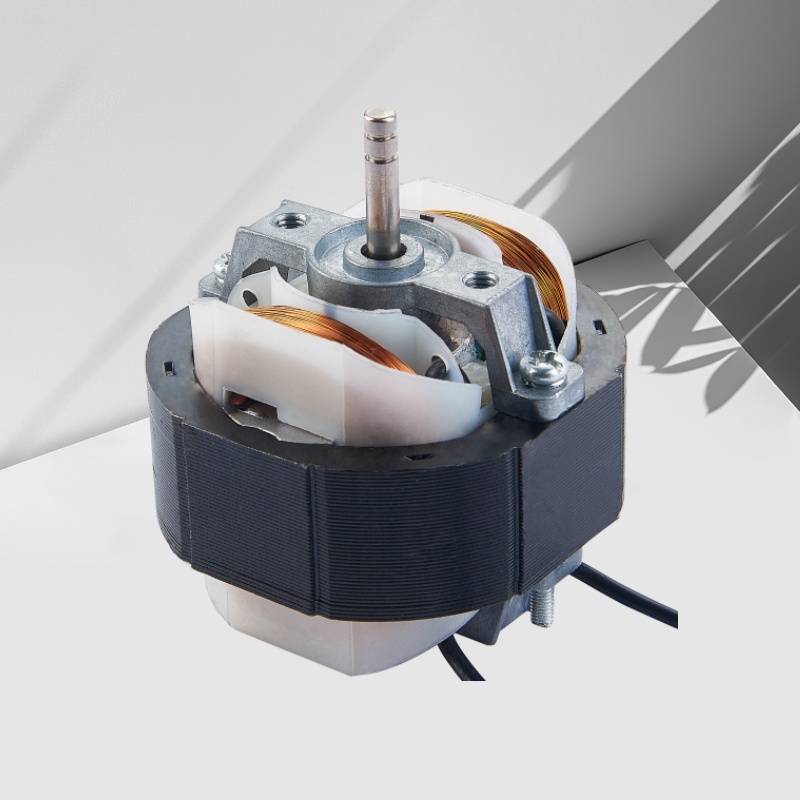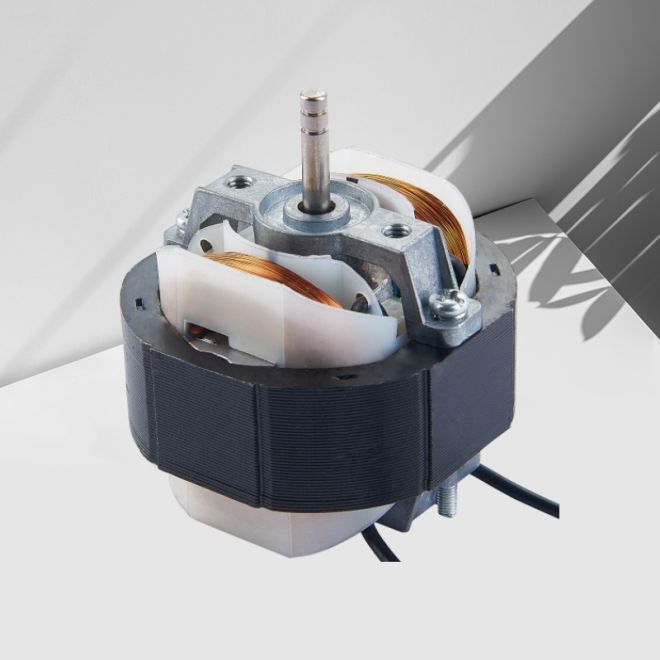Introduction to Heater Blower Motor in Vehicles
In the realm of automotive technology, the heater blower motor serves as a pivotal component within the vehicle’s HVAC (Heating, Ventilation, and Air Conditioning) system. Ensuring optimal cabin comfort and efficient heat distribution, the blower motor for heater significantly enhances the driving experience. Its fundamental role revolves around warming the vehicle's interior, maintaining a comfortable temperature, and aiding in the defrosting process. This article delves into the comprehensive functionalities, operational principles, and common issues associated with heater blower motors, while also shedding light on their manufacturing landscape, including insights into wholesale blower motor suppliers and factories, especially from the burgeoning market of China.
Understanding the Function of Heater Blower Motors
● Heat Distribution Across the Vehicle
The primary function of the blower motor for heater is to facilitate the distribution of warm air throughout the cabin. It accomplishes this by driving a fan that channels heated air from the heater core into the passenger compartment. The heater core itself is warmed by engine coolant that gains heat from the engine. This system ensures that the heat is evenly spread across the vehicle, thus maintaining a uniform and pleasant temperature for all occupants. In colder climates, the efficiency of a heater blower motor directly impacts the cabin's warmth and overall passenger comfort.
● Enhancing Visibility Through Defrosting
Beyond mere temperature regulation, the heater blower motor plays a crucial role in defrosting. During cold weather, condensation and frost can significantly impair visibility, presenting a safety hazard. The blower motor directs warm air towards the windshield and side windows, effectively clearing frost, ice, and fog. This defrosting ability not only improves the driver's visibility but also ensures safer driving conditions.
● Airflow Control and Comfort
The blower motor for heater is instrumental in adjusting the airflow within the vehicle. It achieves this by varying the fan speed, usually through multiple settings such as low, medium, and high. This adjustability allows occupants to regulate the volume and temperature of airflow according to their comfort needs. Advanced systems even integrate electronic controls for more precise adjustments, enhancing the overall driving comfort.
How Heater Blower Motors Distribute Heat
● Warm Air Circulation from the Heater Core
The engine coolant heats up as the engine operates. This heated coolant passes through the heater core, a small radiator-like device situated under the dashboard. The blower motor then propels air over the heater core, transferring the heat from the coolant to the air, which is then pushed into the passenger cabin. This process provides the necessary warmth required during cold weather, making the blower motor a critical component for climate control in vehicles.
● Ensuring Even Temperature Distribution
Ensuring uniform temperature throughout the vehicle cabin is a crucial function of the heater blower motor. By systematically distributing heated air, it prevents hot and cold spots from forming within the vehicle. This not only enhances passenger comfort but also increases energy efficiency by maintaining a steady temperature, thereby reducing the need for frequent adjustments.
Heater Blower Motors and Defrosting Capabilities
● Directing Warm Air to Clear Frost and Fog
The strategic placement and operation of the blower motor allow it to direct warm air onto the windshield, aiding in the rapid clearing of frost and condensation. This function is essential in cold weather conditions where visibility can be severely hampered by a frosted or fogged-up windshield.
● Improving Visibility and Safety on the Road
The defrost function of a blower motor for heater is critical for safe driving. By ensuring clear windows and unobstructed visibility, it helps in reducing accidents caused by impaired vision. This safety feature underscores the importance of a well-functioning heater blower motor in vehicle maintenance.
Airflow Control Features of Heater Blower Motors
● Fan Speed Adjustments for Comfort
The ability to control fan speed is a significant feature of modern heater blower motors. With manual or automatic settings, drivers can customize the airflow to their liking, ensuring maximum comfort. Whether you need a gentle breeze or a powerful blast of warm air, the blower motor's adjustable settings offer immense flexibility.
● Multiple Settings for Optimal Temperature Regulation
Modern vehicles are equipped with advanced HVAC systems that allow users to select from various fan speeds and temperature settings. This customization is primarily possible due to the sophisticated design of the blower motor, which can operate at different intensities to meet diverse climatic needs, ensuring an optimally regulated internal environment.
Working Principle of Heater Blower Motors
● Heat Source and Air Movement Dynamics
The blower motor functions on a simple yet effective principle of drawing air through the heater core and pushing it into the cabin. The movement of the air is powered by a DC motor, usually operating at 12 volts, which spins the fan blades to circulate air efficiently.
● Motor Operation and Fan Activation
Upon activation, the blower motor's DC motor begins to turn, causing the fan blades to rotate. This rotation draws air through the heater core and into the cabin, distributing the heated air generated by the engine coolant. The seamless operation of this motor is crucial for effective climate control within the vehicle.
Speed Regulation in Heater Blower Systems
● Traditional Resistor-Controlled vs. Modern Electronic Control
Initially, heater blower motors used resistors to control fan speed, which limited the current reaching the motor and adjusted the speed accordingly. However, modern vehicles have evolved to incorporate electronic controls, such as pulse-width modulation (PWM), offering more precise and energy-efficient control over fan speeds.
● Advantages of Pulse-Width Modulation (PWM)
The introduction of PWM in blower motor systems has heightened the precision of speed regulation. By varying the duration of the power supply to the motor, PWM ensures smoother transitions and a broader range of speed settings, enhancing both energy efficiency and the overall effectiveness of the HVAC system.
Common Issues with Heater Blower Motors
● Motor Failure and Associated Symptoms
A malfunctioning blower motor can manifest in several ways, including a complete lack of airflow, weak airflow, or unusual noises emanating from the dashboard. Such failures can result from bearing wear, electrical shorts, or overheating, necessitating timely diagnostics and repairs to prevent further damage.
● Electrical and Mechanical Problems
Electrical issues, including loose wiring, blown fuses, and faulty speed control resistors/modules, can hinder the blower motor's operation. Mechanical problems, such as debris obstruction or unbalanced fan blades, can cause grinding noises or vibrations, indicating the need for maintenance or replacement.
Maintenance Tips for Heater Blower Motors
● Regular Cleaning and Inspection Routines
Routine maintenance, including cleaning debris from the intake vents and inspecting the cabin air filters, is essential to ensure optimal performance of the blower motor for heater. Clogged filters can restrict airflow and overburden the motor, leading to premature wear.
● Importance of Checking Filters and Addressing Issues Promptly
Timely inspection and replacement of filters can prevent airflow restrictions that strain the blower motor. Addressing unusual noises or reduced airflow quickly can help avoid costly repairs and extend the lifespan of the motor.
Conclusion: The Role of Heater Blower Motors in Vehicle Comfort
The heater blower motor is an indispensable component in any vehicle's HVAC system. It plays a critical role in converting engine-generated heat into cabin warmth, assuring both driver and passenger comfort while supporting essential defrosting functions. The reliability of the blower motor directly impacts the HVAC system's overall performance and the driving experience. As the automotive industry increasingly shifts towards precision and efficiency, the demand for quality blower motors, including those supplied by manufacturers and suppliers in China, continues to grow.
Ningbo Hanlang Intelligent Drive Technology Co., Ltd. is strategically located in Cixi, at the heart of the economic golden triangle in China. Established in 2011, Hanlang Technology has rapidly ascended to become a leader in the micro-motor industry, boasting an impressive annual growth rate of 40%. As a high-tech enterprise, Hanlang Technology excels in R&D, manufacturing, and sales, serving diverse markets including home appliances, automotive parts, and industrial automation.




